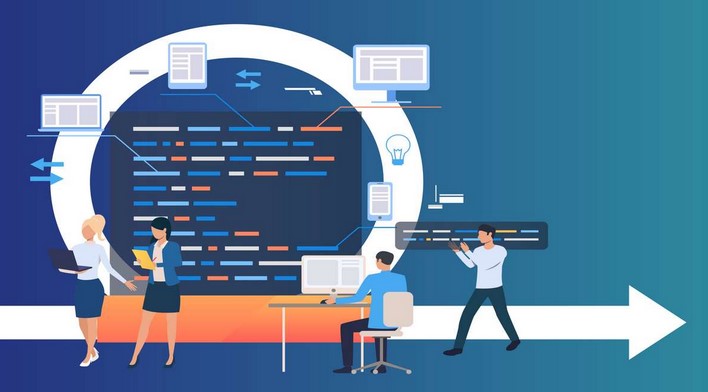 Sagemaker Studio is an Amazon Web Services (AWS) product that provides a comprehensive, integrated development environment for machine learning (ML) workflows. It enables data scientists, ML engineers, and developers to quickly and easily build, train, and deploy ML models. With Sagemaker Studio, users can quickly create ML models, experiment with different algorithms, and deploy models to production. It also provides a range of tools and services to help users manage their ML workflows, such as data exploration, model training, and model deployment. With its intuitive user interface and powerful features, Sagemaker Studio is an ideal platform for ML professionals to quickly and easily build, train, and deploy ML models.
Sagemaker Studio is an Amazon Web Services (AWS) product that provides a comprehensive, integrated development environment for machine learning (ML) workflows. It enables data scientists, ML engineers, and developers to quickly and easily build, train, and deploy ML models. With Sagemaker Studio, users can quickly create ML models, experiment with different algorithms, and deploy models to production. It also provides a range of tools and services to help users manage their ML workflows, such as data exploration, model training, and model deployment. With its intuitive user interface and powerful features, Sagemaker Studio is an ideal platform for ML professionals to quickly and easily build, train, and deploy ML models.
How Sagemaker Studio is Revolutionizing Machine Learning Workflows
Sagemaker Studio is revolutionizing machine learning workflows by providing a comprehensive, integrated development environment (IDE) for data scientists and developers. This IDE enables users to quickly and easily build, train, and deploy machine learning models.
Sagemaker Studio provides a unified platform for data scientists and developers to collaborate on machine learning projects. It offers a range of tools and services that make it easier to develop, train, and deploy machine learning models. These tools include a graphical user interface (GUI) for creating and managing machine learning models, a notebook environment for writing code, and a model deployment service.
The GUI allows users to quickly and easily create and manage machine learning models. It provides a visual representation of the model, allowing users to quickly identify and address any issues. The GUI also provides a range of tools for data exploration, feature engineering, and model evaluation.
The notebook environment allows users to write code in Python, R, or Scala. This makes it easier for users to develop and debug their models. The notebook environment also provides a range of tools for data visualization, model evaluation, and model deployment.
The model deployment service allows users to deploy their models to production. This service provides a range of options for deploying models, including Amazon SageMaker, Amazon EC2, and Amazon ECS. This makes it easier for users to deploy their models to production quickly and easily.
Overall, Sagemaker Studio is revolutionizing machine learning workflows by providing a comprehensive, integrated development environment for data scientists and developers. It offers a range of tools and services that make it easier to develop, train, and deploy machine learning models. This makes it easier for users to quickly and easily build, train, and deploy machine learning models.
Exploring the Benefits of Sagemaker Studio for Machine Learning Teams
Machine learning teams are increasingly turning to Amazon Sagemaker Studio to help them develop and deploy machine learning models. This cloud-based platform provides a comprehensive suite of tools and services that enable teams to quickly and easily build, train, and deploy machine learning models. In this paper, we will explore the benefits of using Sagemaker Studio for machine learning teams.
First, Sagemaker Studio provides a unified environment for machine learning teams to develop and deploy models. This environment includes a variety of tools and services, such as Jupyter notebooks, SageMaker Experiments, and SageMaker Autopilot. These tools and services enable teams to quickly and easily develop and deploy models. Additionally, the platform provides a variety of pre-built algorithms and models that can be used to quickly build and deploy models.
Second, Sagemaker Studio provides a secure environment for machine learning teams to develop and deploy models. The platform is built on Amazon Web Services (AWS) and provides a secure environment for teams to develop and deploy models. Additionally, the platform provides a variety of security features, such as encryption, authentication, and access control. This ensures that teams can securely develop and deploy models without worrying about security breaches.
Third, Sagemaker Studio provides a cost-effective solution for machine learning teams. The platform is built on AWS, which provides a cost-effective solution for teams to develop and deploy models. Additionally, the platform provides a variety of pricing options, such as pay-as-you-go and reserved instances, which enable teams to choose the pricing option that best fits their budget.
Finally, Sagemaker Studio provides a scalable solution for machine learning teams. The platform is built on AWS, which provides a scalable solution for teams to develop and deploy models. Additionally, the platform provides a variety of scaling options, such as auto-scaling and manual scaling, which enable teams to quickly and easily scale their models as needed.
In conclusion, Amazon Sagemaker Studio provides a comprehensive suite of tools and services that enable machine learning teams to quickly and easily develop and deploy models. The platform provides a unified environment for teams to develop and deploy models, a secure environment for teams to develop and deploy models, a cost-effective solution for teams to develop and deploy models, and a scalable solution for teams to develop and deploy models. As such, Sagemaker Studio is an ideal platform for machine learning teams to develop and deploy models.Sagemaker Studio is a powerful tool for empowering machine learning workflows. It provides an intuitive and user-friendly interface for data scientists and developers to quickly build, train, and deploy machine learning models. With its comprehensive set of features, Sagemaker Studio makes it easy to create and manage complex machine learning pipelines. It also provides a secure and reliable environment for data scientists to collaborate on projects and share their results. With its powerful capabilities, Sagemaker Studio is an invaluable tool for any organization looking to leverage the power of machine learning.




